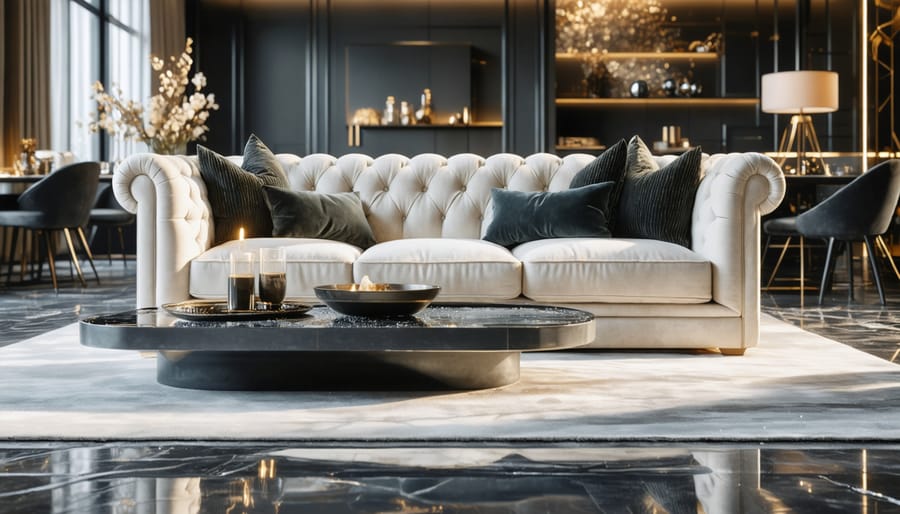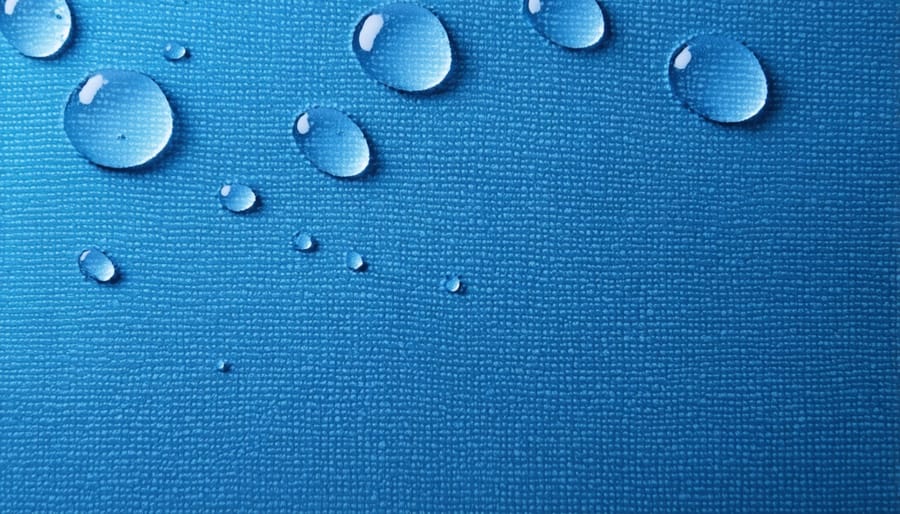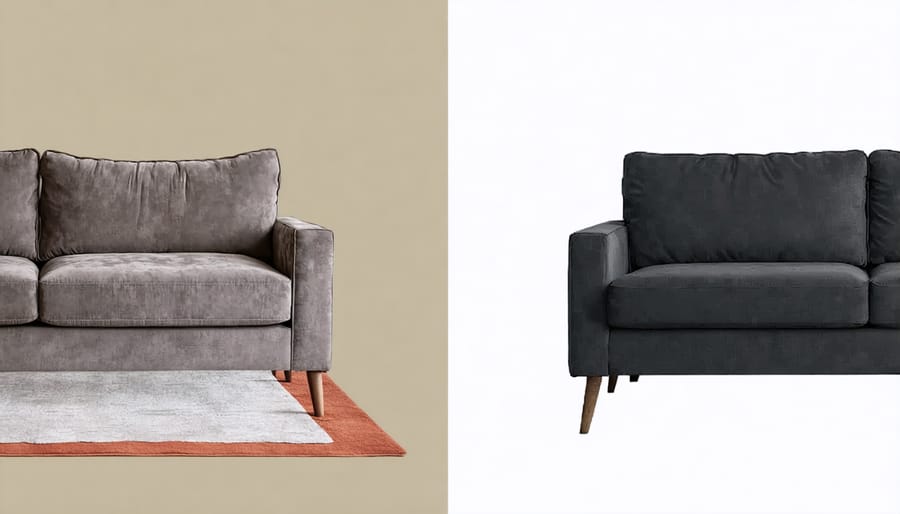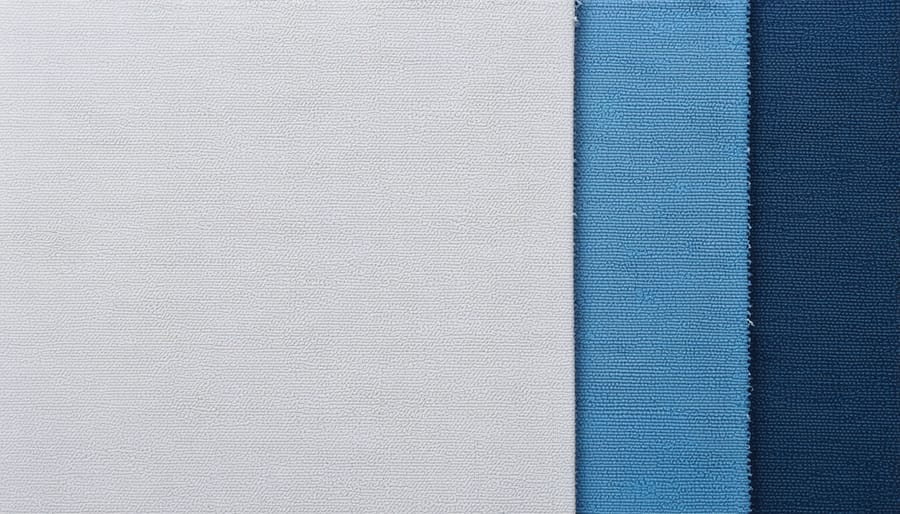
Quality upholstery fabric stands as the cornerstone of exceptional furniture design, merging durability with aesthetic appeal. Modern performance textiles have revolutionized the industry, offering unprecedented resistance to stains, fading, and wear while maintaining luxurious textures and sophisticated patterns. From solution-dyed acrylics to innovative polyester blends, today’s premium upholstery materials deliver commercial-grade resilience for residential spaces, withstanding daily use while elevating interior design.
Whether furnishing a busy family room or designing a high-end commercial space, selecting the right upholstery fabric involves understanding crucial factors like double rub counts, fiber content, and protective treatments. Leading manufacturers now engineer fabrics that combine natural beauty with technical excellence, featuring advanced properties such as UV protection, moisture-wicking capabilities, and antimicrobial treatments. These innovations ensure that quality upholstery fabric not only looks stunning upon installation but maintains its appearance and structural integrity for years to come.
Performance fabrics have revolutionized the upholstery industry, offering solutions that combine style with unprecedented functionality. These innovative textiles feature advanced stain-resistant technologies that create an invisible barrier against spills and soiling, allowing liquids to bead up and roll off rather than absorb into the fibers.
Modern performance fabrics are engineered with easy-clean properties that make maintenance a breeze. Most spills can be cleaned with just water and a clean cloth, while more stubborn stains typically require only mild soap. This practical advantage doesn’t compromise the fabric’s luxurious feel or aesthetic appeal.
Durability is another hallmark of performance fabrics. With enhanced wear resistance and color-fastness, these materials maintain their appearance even in high-traffic areas. Many brands offer warranties of 5 years or more, demonstrating confidence in their longevity. The fabrics undergo rigorous testing for abrasion resistance, pilling, and colorfastness to ensure they meet commercial-grade standards.
For homes with children, pets, or frequent entertainers, performance fabrics provide peace of mind without sacrificing style. Their resistance to fading, staining, and wear makes them an ideal choice for both residential and commercial applications.

In recent years, the upholstery industry has witnessed a remarkable shift toward eco-conscious materials that don’t compromise on quality or style. Recycled polyester, organic cotton, and hemp-based fabrics are leading this green revolution, offering durability while reducing environmental impact. These sustainable options often complement vintage-inspired upholstery fabrics, creating a perfect blend of classic aesthetics and modern environmental responsibility.
One standout example is bamboo-derived fabric, which requires minimal water and pesticides to produce while offering natural antimicrobial properties. Cork fabric has also gained popularity, providing a leather-like texture with exceptional durability and water resistance. These materials not only contribute to a healthier planet but often outperform traditional options in terms of longevity and maintenance.
Many eco-friendly fabrics now come with certifications like GOTS (Global Organic Textile Standard) and OEKO-TEX, ensuring they meet strict environmental and safety standards. The best part? These sustainable materials are becoming increasingly affordable, making it easier for property owners to make environmentally conscious choices without breaking the bank.
For high-traffic furniture pieces like living room sofas, dining chairs, and commercial seating, selecting the right upholstery fabric is crucial for long-term durability and maintenance. Performance fabrics with a minimum of 100,000 double rubs on the Wyzenbeek test are ideal for these demanding environments.
Microfiber stands out as an exceptional choice, offering remarkable stain resistance and easy cleaning properties while maintaining a luxurious feel. Solution-dyed acrylic fabrics, such as Sunbrella, provide excellent fade resistance and can withstand heavy use while resisting mildew and water damage.
For commercial spaces and homes with children or pets, crypton-treated fabrics offer superior protection against spills, stains, and odors. These fabrics incorporate a protective barrier that doesn’t compromise the material’s breathability or comfort.
Woven polyester blends with a tight weave pattern have proven particularly resilient in high-traffic settings. Look for options with a minimum of 30,000 double rubs, though 100,000+ is preferred for maximum longevity. These fabrics often feature enhanced colorfastness and can maintain their appearance even with regular cleaning.
For optimal performance, consider fabrics with built-in moisture barriers and antimicrobial properties. Dark colors and patterns help mask wear and occasional stains, while textured weaves can help disguise signs of regular use. Remember to select fabrics with proper backing and finish for your specific application to ensure maximum durability.

Commercial spaces require upholstery fabric that goes beyond standard residential requirements. High-traffic areas in hotels, restaurants, and offices demand materials that can withstand constant use while maintaining their appearance and structural integrity. Look for fabrics with a minimum of 50,000 double rubs in the Wyzenbeek abrasion test – the industry standard for durability testing.
Fire safety codes are another crucial consideration. Commercial spaces must use materials that meet specific flame-retardant standards, typically requiring fabrics that comply with California Technical Bulletin 117-2013 or NFPA 701 requirements. Many manufacturers offer inherently flame-retardant fabrics or those treated with fire-resistant finishes.
Stain resistance is paramount in commercial settings. Solution-dyed acrylics and polyesters with protective finishes are excellent choices for areas where food and beverages are served. These fabrics resist fading from UV exposure and harsh cleaning chemicals, making them ideal for spaces that require frequent sanitization.
Color and pattern selection should balance aesthetics with practicality. Darker colors and patterns that incorporate multiple hues help mask wear and stains between cleanings. Many commercial-grade fabrics now come with antimicrobial properties, which is especially important in healthcare settings and public spaces where hygiene is a top priority.
Remember to check the fabric’s backing and stability – commercial upholstery should have tight weaves and reinforced backings to prevent stretching and maintain shape over time.
Proper pattern matching and fabric orientation are crucial elements in achieving professional-looking upholstery results. When working with patterned fabrics, careful attention must be paid to alignment across seams and different furniture sections. This precision ensures visual continuity and demonstrates craftsmanship in the finished piece. Through game-changing upholstery methods, even complex patterns can be perfectly matched across multiple surfaces.
The fabric’s nap or pile direction also plays a vital role in the overall appearance and durability of the upholstery. Running your hand across the fabric surface reveals the nap direction – when brushed one way, it appears darker; the other way, lighter. All pieces must be cut and applied in the same direction to prevent color variations and ensure consistent wear patterns.
For striped or geometric patterns, horizontal alignment is particularly important on seat cushions and backrests. Professional upholsterers often begin with the most visible areas, working their way to less noticeable sections while maintaining pattern consistency. This methodical approach not only creates a polished look but also maximizes fabric usage and minimizes waste, making it both aesthetically pleasing and cost-effective.

The strength and durability of upholstery seams play a crucial role in extending furniture lifespan. Professional upholsterers employ several key techniques to enhance seam durability, including double-stitching high-stress areas and utilizing reinforced thread patterns. The industry standard involves using bonded polyester thread with a minimum strength of 40-60 pounds, ensuring seams can withstand daily wear and tear.
For maximum durability, experts recommend implementing French seams on curved edges and stress points, providing additional reinforcement where fabric pieces meet. This technique creates a double-fold barrier that prevents fraying and maintains structural integrity over time. On straight seams, a flat-felled construction offers superior strength while maintaining a clean, professional appearance.
Modern upholstery methods also incorporate specialized welting techniques, where the cord is wrapped in matching fabric and secured with heavy-duty stitching. This not only enhances aesthetic appeal but also provides additional structural support at crucial junctions.
To further extend seam life, professional upholsterers often apply seam sealants along stress points and utilize strategic placement of support materials beneath high-wear areas. This comprehensive approach to seam construction ensures longevity while maintaining the fabric’s intended appearance and functionality.
Regular maintenance is the secret weapon for preserving your upholstery’s beauty and extending its lifespan. By following these expert upholstery techniques, you can protect your investment and maintain that showroom-fresh appearance for years to come.
First, establish a weekly vacuuming routine using an upholstery attachment to prevent dirt from embedding into the fabric. Pay special attention to crevices and seams where debris tends to accumulate. For optimal results, vacuum in multiple directions to lift trapped particles effectively.
Treat spills immediately by blotting (never rubbing) with a clean, white cloth. Keep a fabric-specific spot cleaner on hand for emergencies, but always test it on a hidden area first. Consider applying a professional-grade fabric protector annually to create an invisible barrier against stains and spills.
Rotate cushions monthly to ensure even wear and maintain consistent appearance. In spaces with direct sunlight, use window treatments or UV-protective films to prevent fabric fading. Keep your upholstery at least 24 inches away from heat sources to avoid fiber degradation.
Professional cleaning every 12-18 months is essential, even if the fabric appears clean. This deep treatment removes hidden contaminants and refreshes the fabric’s protective properties. Between professional cleanings, use a soft brush to maintain the fabric’s texture and prevent matting in high-traffic areas.
For optimal humidity control, maintain indoor levels between 40-60% to prevent fabric deterioration and mold growth. These simple yet effective maintenance practices will help preserve your upholstery’s beauty and structural integrity for years to come.
Selecting quality upholstery fabric is essential for creating long-lasting, beautiful furniture pieces that stand the test of time. By considering factors like durability ratings, fiber content, and specific use requirements, you can make informed decisions that protect your investment. Remember to match your fabric choice with your lifestyle needs, whether that’s pet-friendly materials for family homes or luxurious options for formal spaces. Don’t forget to request samples before making final decisions, and always verify cleaning and maintenance requirements. With proper selection and care, quality upholstery fabric will maintain its appearance and performance for years to come. Take the first step toward transforming your furniture by exploring our recommended fabric collections and consulting with professional upholsterers for expert guidance.